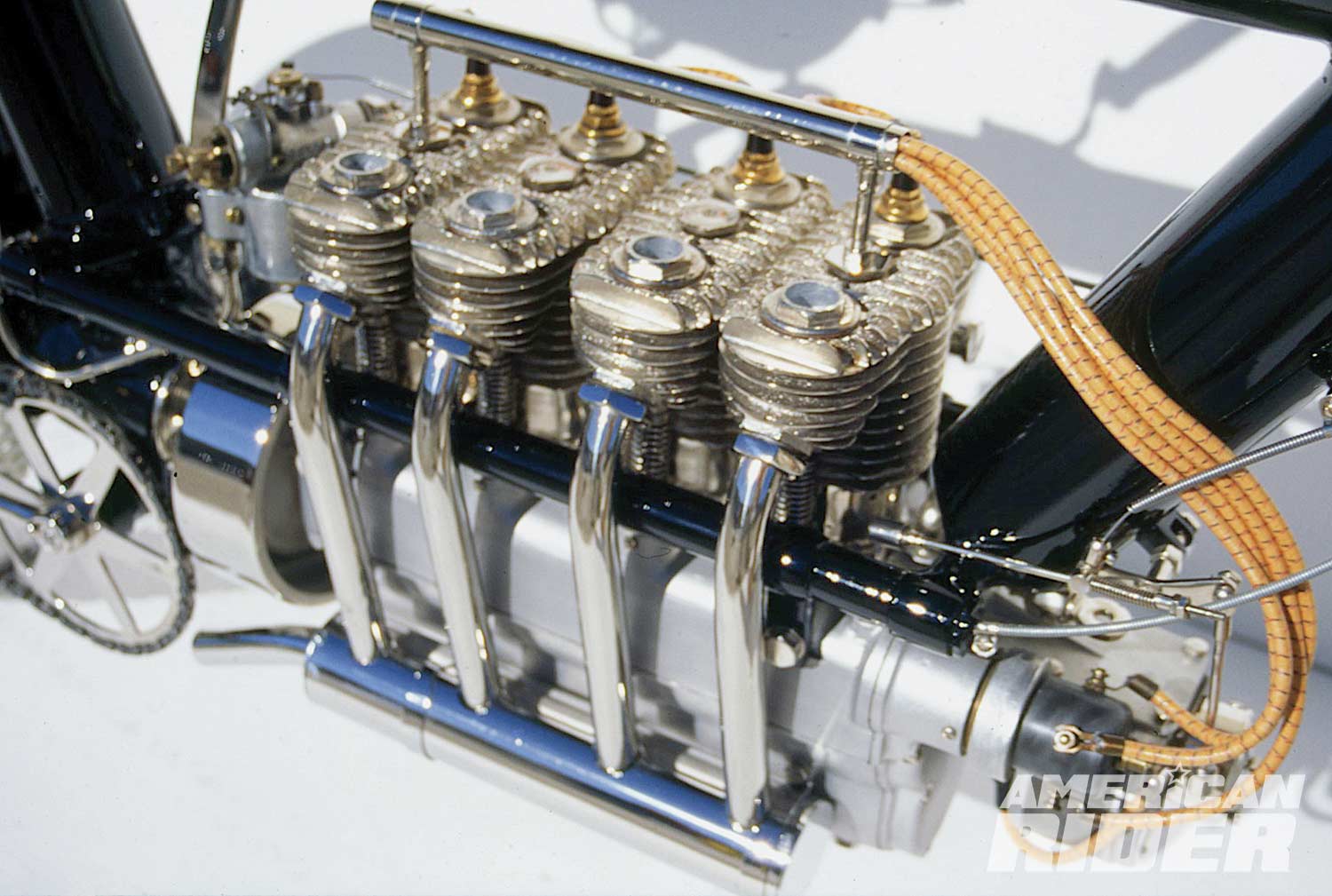American 4-cylinder motorcycles have always been a rarity, but they were conceived not long after the venerable V-Twin. This episode of Obscurity Files will focus on the first and the fewest of the Fours: the Pierce, Cleveland, and Militaire/Militor.
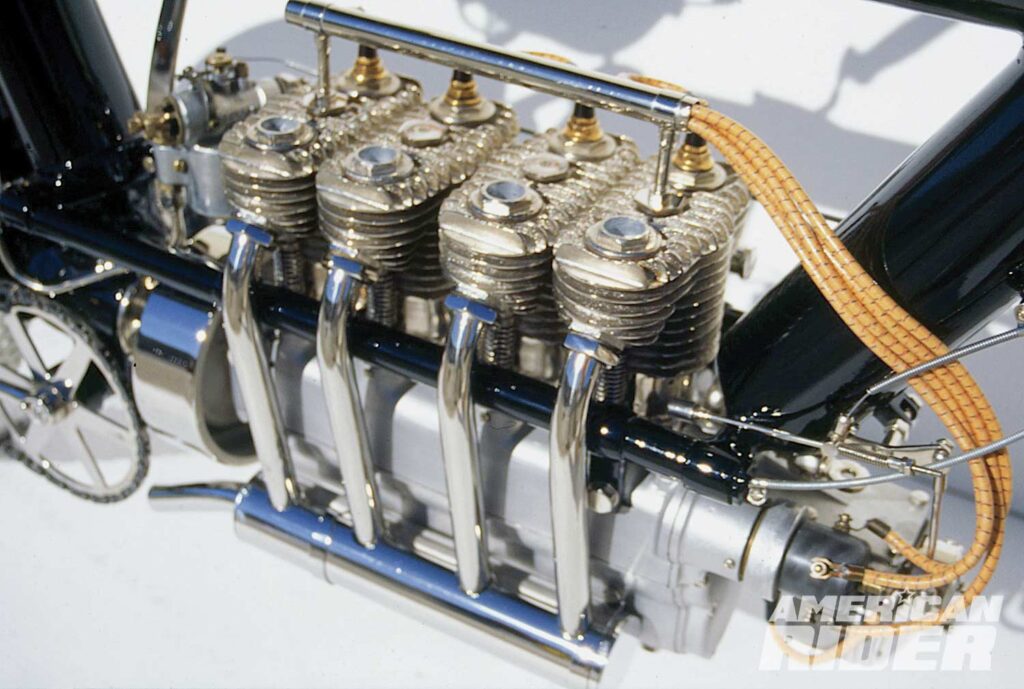
Pierce
Pierce, which built America’s first 4-cylinder in 1909, didn’t bother with the typical progression from single-cylinders to V-Twins to Fours. Not that it started from scratch. The first American Four was roughly patterned on the FN Four of Belgium, built from 1905 to 1923.
While the Pierce did adopt the FN’s longitudinal inline-Four layout with shaft drive, it differed in significant ways, including a much larger displacement, about 43ci (700cc). Additionally, the FN valve system was an atmospheric inlet-over-exhaust (IOE) layout, whereas the Pierce design was a two-cam side-valve, with intakes on one side and exhausts on the other.
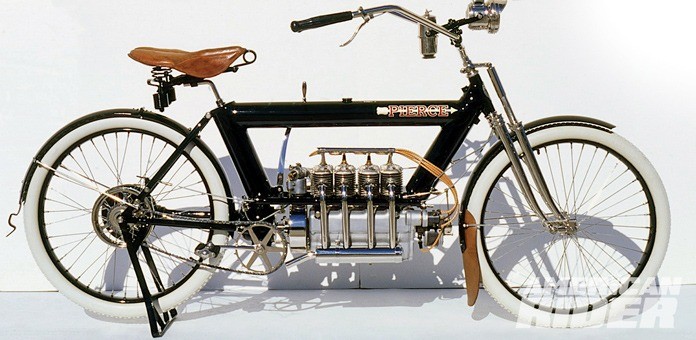
Atypically for the time, the engine was a stressed member of the frame, whose 3.5-inch tubes were copper-plated on the inside and carried the fuel and oil. The twin-girder leading-axle fork held a single shock absorber.
The Buffalo, New York, company was run by Percy Pierce, son of George Pierce, founder of the Pierce-Arrow Motor Car Company and Pierce Cycle Company. Percy was an accomplished auto endurance driver and was put in charge of the bicycle and motorcycle company at age 30. He collected an FN Four on a trip to Europe, and his Pierce Four went into production the following year.
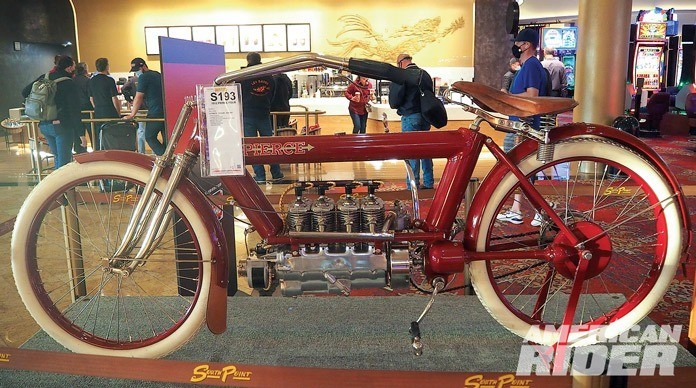
In its inaugural edition, the Pierce Four used direct drive. Absent a clutch or gearbox, pedal power got the machine underway, and the shaft drive took over once the engine fired up. By 1910, the motorcycle had a multi-disc clutch and 2-speed transmission. The Pierce Four was touted as the “vibrationless motorcycle,” providing the rider “motor car comfort to travel comfortably from a walking pace up to the speed of a motor car.”
In materials, design, engineering, and craftsmanship, the Pierce Four was markedly superior to the Belgian FN, and its engine was reportedly good for 55 mph. But it was also expensive to build. At $325, which soon rose to $400, the original American Four was too costly in a crowded market when Henry Ford’s Model T Runabout was $260.
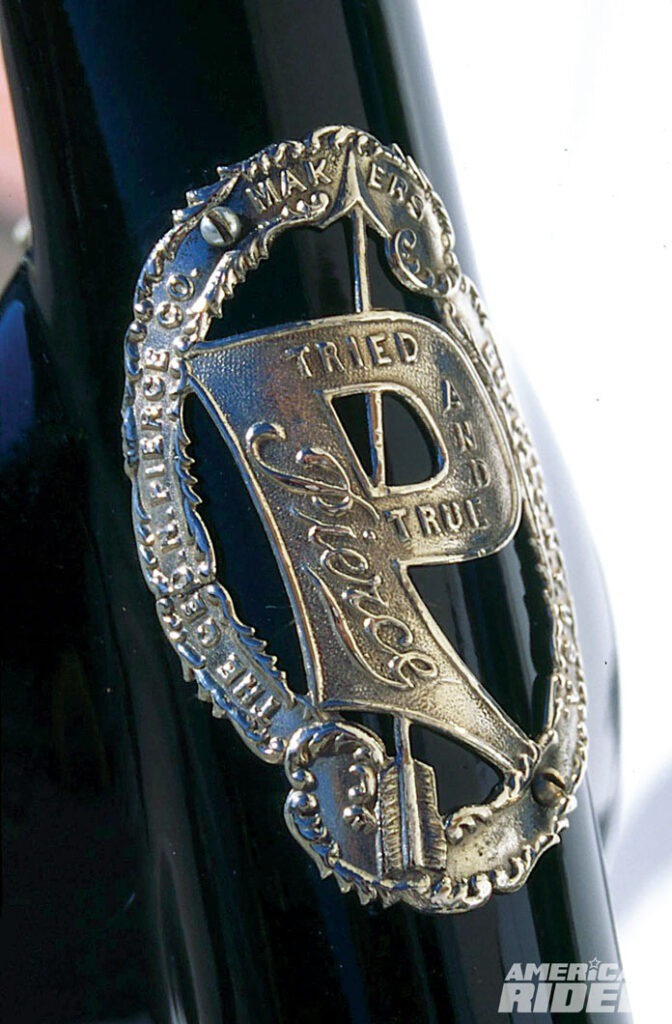
Plus, in 1912, the Henderson Four appeared on the market, with a 965cc engine and a lower price.
Pierce made a good case for the viability of a 4-cylinder motorcycle, but the combined effects of the era’s economy and the growing popularity of the Indian and Harley-Davidson V-Twins weren’t in his favor. Pierce suspended motorcycle production in 1913, having built fewer than 500 machines, and the assembly plant was converted to produce Pierce-Arrow trucks slated for military use in Europe.
Pierce was not the first firm to fall victim to the tightening financial pinch in the early days of the 20th century. Dozens of other motorcycle companies quit the scene in the same period, many having built far fewer machines. But Pierce was the first American outfit to offer a 4-cylinder engine, ensuring its place in the history books.
Cleveland
From 1915 to 1925, the Cleveland Motorcycle Manufacturing Company was known for its light, inexpensive line of 2-stroke machines. Low on both power and speed, its 150-pound bike sold for $150. The lightweights were popular with budget-conscious commuters and messenger services, and they performed surprisingly well in endurance runs.

Following America’s relatively brief engagement in World War I, economic optimism was on the rise. Happy days were here again, the 1920s were roaring, and Cleveland decided it was time for another 4-cylinder offering in 1925. The 600cc motor was patterned on the Pierce engine but with chain drive. It found little acceptance in the market.
In 1926, the company turned to engineer Everett DeLong, formerly with Henderson and Ace, to design a bigger and better Four. DeLong drew up a 750cc monoblock inline-Four, with the cylinder head and intake manifold as a single casting. The F-head engine featured a 3-speed transmission that could be removed with the engine in place. The chassis carried a leading-link suspension in front, rigid at the rear. The Cleveland was the first American machine fitted with a drum front brake, and one of the first with a sidestand.
Interestingly, DeLong could have been the link to a 4-cylinder Harley-Davidson. Before joining Cleveland, DeLong had been working at Harley and was developing a 4-cylinder model, but production chief William Davidson rejected his inline-Four proposal as too expensive.
Related: Venerable V-Twins: America’s Motor for More than a Century
DeLong next designed a V-Four engine for H-D, using existing components from the 1924 Harley J model. A wooden mock-up of the engine was built, but Davidson ultimately decided against it for cost reasons.
DeLong’s Cleveland Four turned out to be down on power compared to the Henderson and Ace Fours, so in 1927 the engine was upgraded to a 1,000cc version rated at 20 horsepower. The 420-pound machine was reportedly good for 90 mph.
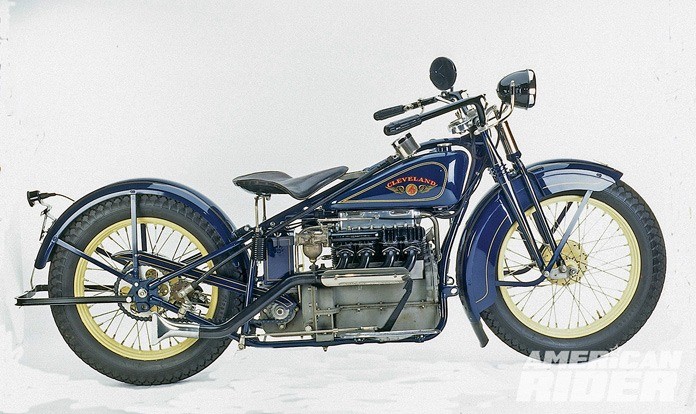
Still, the Henderson remained king of the road, growing from 990cc to 1,168cc and finally 1,310cc. Joe Petrali, later to gain racing fame with Harley-Davidson, rode one on Chicago’s new four-lane “super-highway” to 116 mph.
By 1928, Cleveland’s financial situation was in poor shape. Discussions were held with Harley-Davidson about the possible purchase of the Ohio company, but nothing came from them.
Nonetheless, work continued on a new Cleveland model called the Tornado. It featured a high-compression engine with magnesium-alloy pistons, bigger valves, a lower chassis, and a top speed of “near 100 mph.” That was the production model.
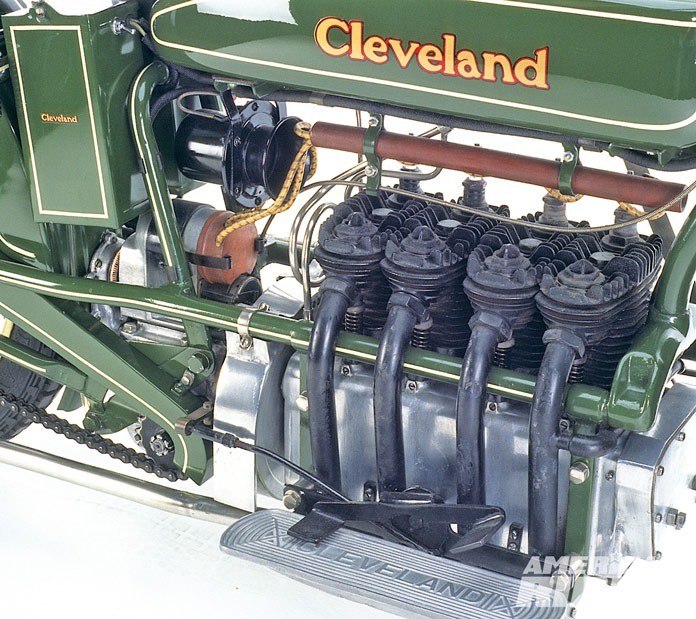
The high-performance version, labeled the Century, got even larger valves, higher compression, a special expansion chamber exhaust, and a beefier front fork. And a brass plate fixed to the valve cover certified a road-tested speed of 100 mph.
The Cleveland Four showed great promise, thanks to the design and engineering acumen of Everett DeLong. In terms of ease of maintenance, it was superior to the Henderson and the Ace.
But its timing couldn’t have been worse. With the stock market crash of 1929 and the ensuing Great Depression, the Cleveland Motorcycle Manufacturing Company moved to the pages of history in 1930. An estimated 2,000 Cleveland Fours were built.
Militaire/Militor
“Now for something completely different.” With a nod to Monty Python, those words opened my first paragraph on the Militaire in The Encyclopedia of American Motorcycles (Courage Books, 1999, now out of print). More specifically, I wrote, “As a motorcycle/automobile, the Militaire was better than neither.”

Also built by a Cleveland, Ohio, company, the Militaire (1911-1922) was apparently intended for military use. If so, it was a mission at which it failed. Its purpose may have been courier service, since the design and construction show no indication of combat readiness or even use in rugged terrain. It was tested by the Army in France in 1917, but it reportedly got bogged down in the mud.

Despite its relatively brief production life, the Militaire went through several design revisions, manufacturing locations, and ultimately a name change. The Ohio version, which lasted only two years, was powered by a 480cc single-cylinder F-head engine with a cooling fan and had automotive-type 28-inch wooden wheels, a steering wheel, and a friction link between the driveshaft and sprocket. In its second year, the engine was liquid-cooled.
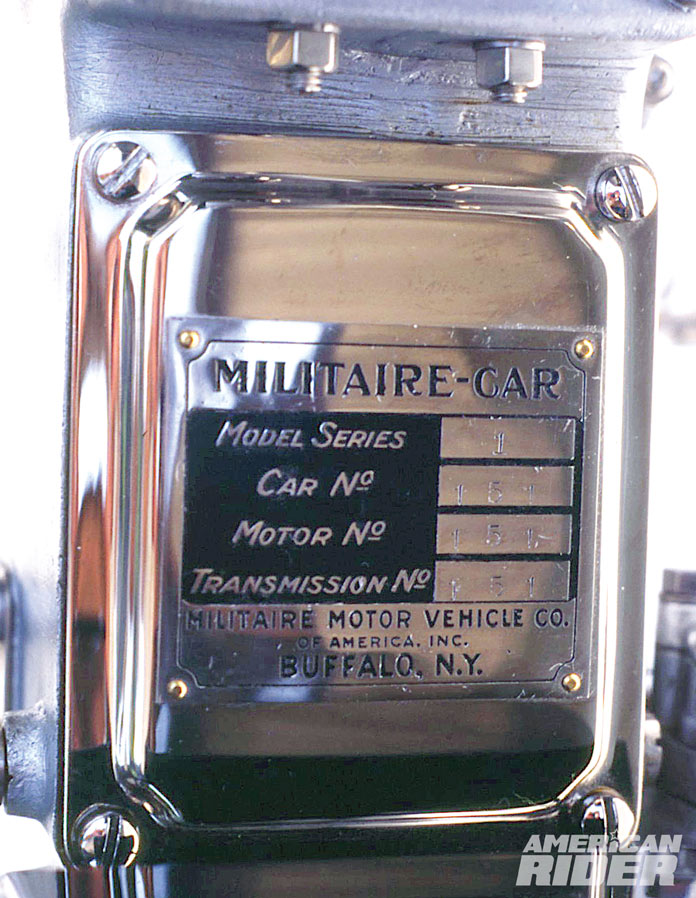
Militaire’s 1,114cc 4-cylinder engine made its debut in 1913, by which time the original firm had gone bankrupt, its assets bought by N.R. Sinclair, and production moved to Buffalo, New York. The Four retained the complex, articulated front end, but the steering wheel was supplanted by handlebars. The retractable rear idler wheels were retained, eliminating the need for a gentleman rider to put his feet down in sloppy conditions.
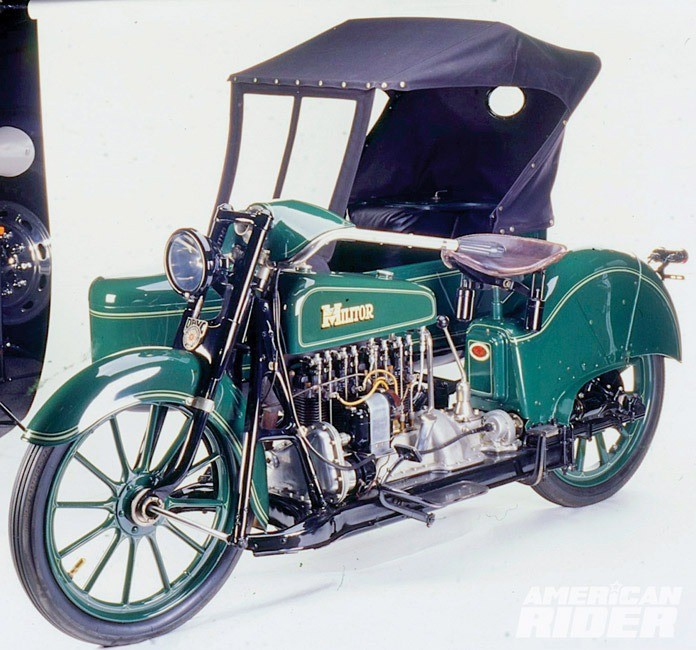
The central shift lever operated the 3-speed transmission, which also had a reverse gear. Foot controls operated the clutch and brakes, and the engine was brought to life by a small stepstarter attached to the gearbox. The front end, often mislabeled hub-center steering, was a triplex girder fork on the auto-style frame, with lower leaf springs attached to a leading-link curved axle. The artillery wheels, made of hickory, carried 28-inch tires.
When the Buffalo operation went bankrupt in 1917, Sinclair apparently had new investors lined up and the company reformed in New Jersey under the name Militor. After the 800-pound machine failed its basic military training tests, the company turned up in Springfield, Massachusetts, under the banner of automaker Knox Motors. The plant was across the street from the Indian Motorcycle Company.
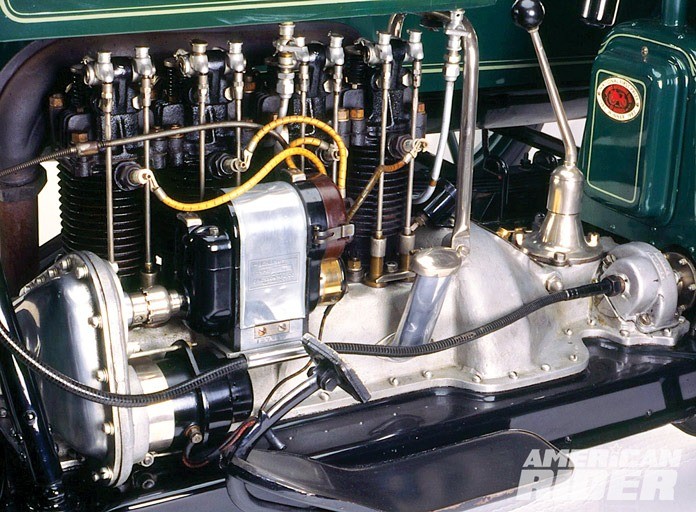
A year later, Sinclair had Militor conjoined with the Bullard Machine Tool Company in Bridgeport, Connecticut. The final two years of production featured a new 1,435cc overhead-valve engine, swingarm rear suspension, and valanced fenders. The frame also doubled as the oil reservoir. The rear idler wheels were gone, and the machine was offered only in a sidecar version. The Militor was getting closer to becoming a car, but in terms of market appeal, it remained a solution in search of a problem. Production was suspended in 1922.
These three of the first four American Fours had short life spans. The fourth, the Henderson, would last much longer, also evolving under different names, finally as an Indian. But that’s another story.


